Essential oils are key to soap making. Not only do essential oils add a beautiful scent to your homemade soaps, but they also bring the wonderful properties that come with each oil such as calming, energising or anti-ageing.
But how do you use essential oils in soap making and how much is needed? How do you avoid the skin irritation that can be caused by pure essential oil?
We’ve put together a handy guide to some of the most popular essential oils for soap making, measurements for how much can be used in a batch of soap and more.
Contents:
- How much essential oil do you need?
- Top essential oils for soap making
- Lavender essential oil
- Lemon essential oil
- May chang essential oil
- Rosemary essential oil
- Patchouli essential oil
- Cedarwood essential oil
- Sweet orange essential oil
- Peppermint essential oil
- Ylang ylang essential oil
- Lemongrass essential oil
- Using essential oils in cold process soap
- Essential oils for hot process soap
- Conclusion
How Much Essential Oil Do You Need?
It can be tricky trying to work out how much essential oil you need for your soap recipes and the information online is limited at best and confusing at worst.
Those who sell soap in the UK or EU have to abide by legislation which gives strict guidelines.
Before you make anything you should always check the IFRA document for the essential oil. This will help you determine the maximum safe amount to use in your recipe.
You can find the IFRA documents in our technical documents folder.
All types of soap are in IFRA category 9, so that’s the category to focus on this time.
For example, cinnamon leaf essential oil should only be used at a maximum level of 0.5% of your soap and ylang ylang essential oil at 1.4%.
Just because essential oils are natural it doesn’t mean they are always safe - adding too much can irritate your skin. Don’t let this put you off using them however - we have some suggestions to get you started.
Not all essential oils will have much staying power in soap making. Top note essential oils often need to be blended with middle and base note essential oils to help the scent be persistent. For more information about essential oil notes, see our blog post here
This is why a blend of essential oils often works better than a single oil alone.
Top Essential Oils For Soap Making
We’ve put together a list of the top essential oils you might like to use in your soap recipes to give you information on amounts to use, scents and benefits of the oil. You’ll find the most commonly used oils alongside some of our personal favourites!

Lavender Essential Oil
Lavender essential oil is a mid-note and has a herbal, floral fragrance. It is not everyone's first choice but don’t be put off by its old fashioned reputation. It’s a classic!
Lavender is well known for its ability to calm and soothe.
Lavender blends with so many other essential oils and has a long lasting scent. We recommend using lavender oil at 3% of the total weight of your soap.
Take a look at our lavender cold process soap recipe for an example of how to use lavender essential oil in soap.
We offer two types of pure lavender essential oil, conventional lavender essential oil, and organic Bulgarian lavender essential oil.
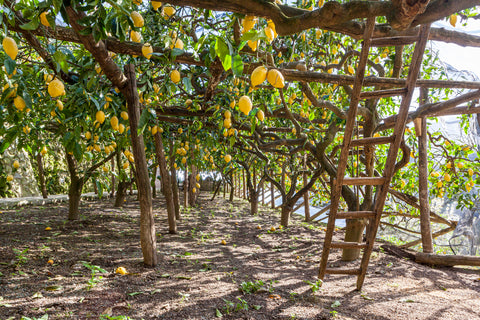
Lemon Essential Oil
Bring the smell of summer to your soaps! Fresh and zesty - added to your soaps lemon essential oil will bring a refreshing and uplifting scent.
We stock conventional lemon essential oil as well as organic lemon essential oil. We’re certified by the Soil Association and inspected annually to make sure we adhere to their strict standards.
We recommend trying 5% lemon essential oil in your soap recipe. Lemon can be a tricky scent to fix in your soap, so try blending it with a base and middle note essential oil.
Try lemon essential oil in our argan oil melt and pour soap recipe.
May Chang (Litsea Cubea) Essential Oil
Not that well known but as a mid/top note it is absolutely fantastic for bringing a reliable burst of zesty citrus and smell of summer to your soaps!
Bright, fresh and zingy – adding May Chang to your soaps will bring a refreshing and uplifting scent.
It’s a great soap to have next to your kitchen sink to remove strong odours from your hands when cooking and it leaves a lovely lingering scent in the room.
Try using it at up to 1.5% of the weight of your soap recipe. Also try combining it with lime, lemongrass and bergamot for a citrus sensory overload.
See May Chang in action in our palm free cold process soap recipe

Rosemary Essential Oil
Rosemary has a beautiful, herbal and woody fragrance - a great unisex scent that everyone can use. It is a mid note and the scent sticks extremely well in soap.
Rosemary blends well with so many other essential oils including lavender, patchouli, lemongrass and peppermint.
Try it in your soap recipe, it can be used alone at up to 4% of the weight of your soap.
For a great example, see our recipe on how to make shampoo bars
Patchouli Essential Oil
Patchouli is definitely the Marmite of the essential oil world - you either love it or hate it! It’s a very strong, musky and earthy aroma that blends well with herbal and floral essential oils.
Patchouli essential oil is a base note and has awesome staying power from a scent perspective. Try it used alone at up to 3% of the weight of your soap.
Try blending Patchouli with a floral such as lavender or geranium. It also goes well with rosemary.
We stock organic patchouli essential oil too!
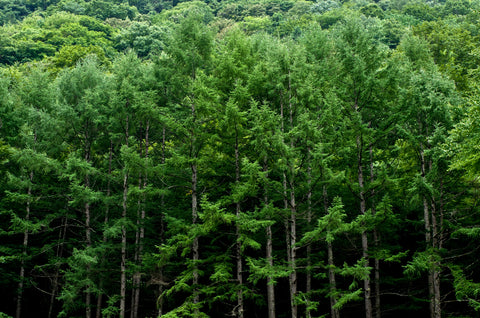
Cedarwood Essential Oil
One of my favourites in soap, cedarwood oil has quite a masculine, woody, forest floor scent. It makes a lovely soap to use in the evening.
It blends really well with herbal essential oils such as clary sage or frankincense as well as the citrus scents.
Cedarwood essential oil is a base note has great longevity so is a great addition to your collection.
Try it at up to 3% of the weight of your oils.
We stock both conventional cedarwood atlas essential oil as well as certified organic cedarwood atlas essential oil.
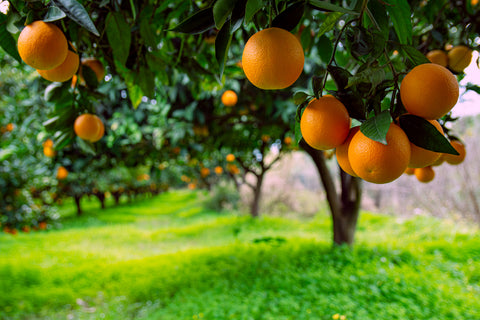
Sweet Orange Essential Oil
This oil smells so good it makes your mouth water!
Refreshing, juicy, sweet and zingy, sweet orange essential oil makes a wonderful scent for a summer soap.
Or you could combine it with a little cinnamon leaf essential oil and clove bud essential oil to make a festive Christmas blend. Take a look at our orange and cinnamon melt and pour recipe for a great example.
As a top note however it will not hang around if used alone so it is best used as part of a blend. Try sweet orange and geranium for a floral hit with or patchouli if you prefer a little earthiness in your shower.
It can be used alone at up to 4% of the weight of your soap but is best blended for longevity.
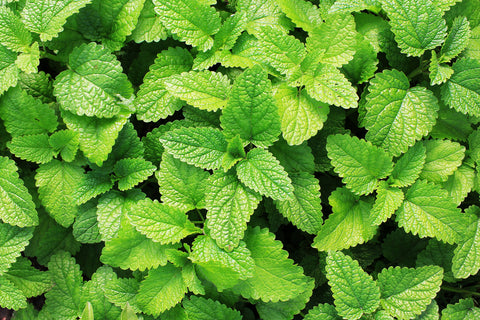
Peppermint Essential Oil
Another summer soap - the cooling and tingling effect of peppermint essential oil is wonderful on a hot day.
Peppermint is a top note but unusually has fantastic staying power even when used alone. It blends well with lavender, rosemary, tea tree, eucalyptus, lemongrass to name but a few but go easy as it will over power many other essential oils.
It can be used alone at up to 3% of the weight of your soap but is such a strong scent that 2% works well. For a great example see our shea butter cold process soap recipe.
We stock both conventional peppermint essential oil and organic peppermint essential oil, certified by the Soil Association.
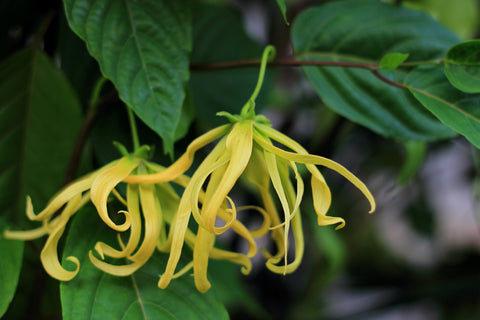
Ylang Ylang Essential Oil
Think loud, full bodied, tropical, floral bouquets and you have ylang ylang essential oil. There is no mistaking a bar of soap that contains it.
Ylang ylang is a base note and the scent should easily last the lifetime of your bar of soap.
Ylang ylang can be a little too much on its own but as part of a blend gives a fantastic depth of fragrance. It blends well with sandalwood and rose geranium or try it with a lavender and grapefruit blend for a lighter scent.
It can be used alone at up to 1.4% of the weight of your soap but is such a strong scent that you will find that more than enough and you can combine it with other essential oils too.
For a great example, see our pink Himalayan salt soap recipe
We also offer organic ylang ylang essential oil which has been certified organic by the Soil Association.
Lemongrass Essential Oil
No soap making blog is complete without a shout out for Lemongrass essential oil.
Lemongrass provides a citrus mid note with longevity. It is extremely versatile and a must for lemon lovers everywhere.
Lemongrass blends so well with lavender, rosemary, peppermint, ylang ylang, tea tree and more. In fact I would struggle to come up with an essential oil that I would not try it with.
Take a look at our honey soap recipe where we pair lemongrass essential oil with rosemary.
It can be used at 1.6% of the weight of your soap.
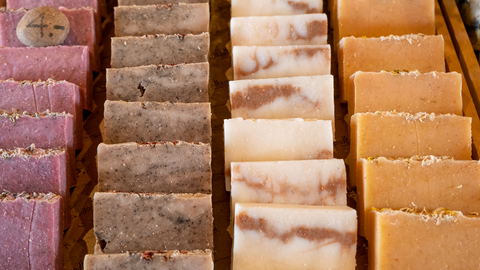
Essential oils for cold process soap making
When you're making cold process soap, it is common to think about essential oils in a slightly different way. In most recipes you find it recommended to use between 30-35g of essential oils for each 1kg of base oils.
This is great for soap making, and makes the recipe easy to follow. However, it doesn't give you a good idea of the finished percentage of essential oils left in your bar of soap.
Unfortunately you can't use 30-35g of any essential oil blend and have a safe bar of soap.
For example, lets say you're making a cinnamon and orange Christmas soap with a cold process recipe and 1kg of base oils.
You pop your recipe into a soap calculator, set the water amount to 30% of the oils, and essential oils to 30g per 1kg of oil. All good so far.
You've decided on an essential oil blend of 50% cinnamon essential oil and 50% sweet orange essential oil. Sounds good, right?
However, you'd have 15g of cinnamon essential oil in 1470g of finished soap, which is around 1%. The maximum IFRA recommendation for this essential oil is 0.5%.
No cosmetic assessor will pass your recipe. Definitely bad news.
Before you make the recipe, always double check the finished % usage rate of your essential oils against the IFRA standards. If you remember that, you won't go far wrong.
Essential oils for hot process soap making
Our advice for using essential oils for hot process soap is very similar to using essential oils in cold process soap making.
The only difference is that you should add your essential oils after your soap has cooked, not before!
Otherwise you'll fill your kitchen with the strong scent of essential oils as it starts to evaporate, and there won't be much left in your finished soap bars.
Continue reading
Now that you've learned how to use essential oils for soap making, why not continue learning about essential oils?
-
Interested in rosemary essential oil? Find out if rosemary oil is good for hair growth
-
Want to try cold process soap making? Try our honey soap recipe
-
Want to know the evidence behind unusual essential oil claims? Read more about ginger oil for weight loss.
- Learn more about essential oils with our best essential oils for spring blog
Conclusion
Using more than one essential oil in your soap recipe usually has better results than using a single essential oil.
Check the IFRA document, looking at Category 9 for the maximum safe usage rate for your essential oils before making your soap.
Don't be afraid to experiment and try different things!
So, what essential oils will you be adding to your homemade soaps? Comment below and let us know.


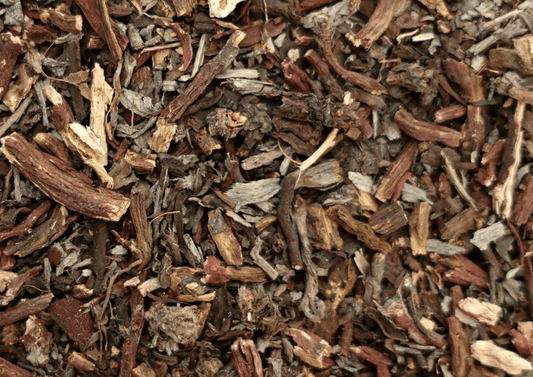
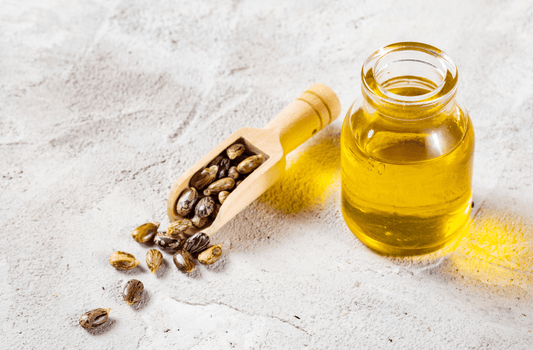
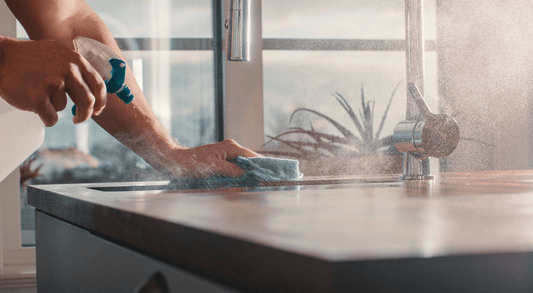
4 comments
Hi Nabil,
No problem, I’ll try to answer your questions below:
1. Here’s how we do it: Measure your essential oils in your soap recipe by weight, not volume. Add up the total weight of all the ingredients in your soap (including all base oils, essential oils, colourants, water and sodium hydroxide). Then divide the weight of the essential oil by the total weight of your ingredients, and multiply by 100. That’s your percentage essential oil in the soap.
2. This is a big topic, each essential oil has its own risks of adulteration. Unfortunately it is impossible to test for this at home, and can only be done in a lab. I hope to publish more information about this in the future.
3. The main difference between the two is appearance. Cold process soap bars have a nice, clean appearance and you can easily do colour swirls. Hot process soap looks more rustic, is often a little uneven and it is pretty much impossible to do colour swirls.
4. If you’re looking for rustic soap bars, then hot process soap making is a good method to use. Take a look at one of our hot process soap recipes to see what I mean.
Hope this helps,
Andy
Thank you indeed for a very insightful article, using a baby-step approach, easy to comprehend especially for the very beginners. No secrets, but open books in all aspects. My four questions, if you allow me:
1. How can you measure the percentage of scented oils in the final product of soaps’ weight? Is there a way yo measure this at home, or it has to be done at the lab?
2. How can we make sure that the essential oils are authentic and pure and real natural oils with no additives or coloring, or what call ot organic? Is there a way yo test the products at home?
3. What are the main differences between cold processed and hot processed soap making? Is there any main difference or impact on the final end soap product, whether the color, the scent, the chemical structure, etc…
4. Is there any advice to help adding a rustic look to the end product, just to have that attractive look?
Thank you. Nabil
Hi Sandra,
When we gave the % usage rates we were thinking of the final weight of the soap. However this is more useful for melt and pour soap making.
If you’re looking for cold process usage rates, 30-35g of essential oil for each 1kg of oils is a good place to start.
However, the % essential oil in the finished recipe should not exceed the IFRA maximum % for class 9.
For example, if you made a cinnamon soap with 30g of cinnamon essential oil and 1kg of base oils, you would have 30g of essential oil in around 1500g of finished soap. This is a 2% dilution, and exceeds the 0.5% maximum set for cinnamon essential oil in the IFRA guidelines.
Hope this helps!
Andy
When calculating the amount of essential oils in cold process soap, you mention the weight of soap. Is this the total weight of oils/butters used or the final weight of the bars of completed soap?
Many thanks,
Sandra